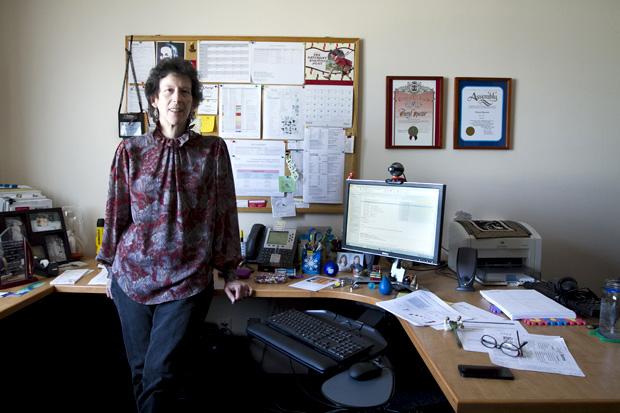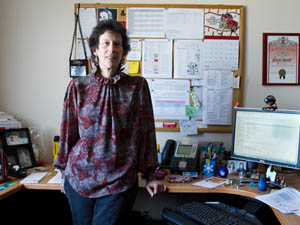
In a recent paper published by two Harvard graduate students, it was found that the use of text messaging and peer mentoring kept students from falling through the cracks before entering college.
Ben Castleman, a doctoral candidate in the Quantitative Policy Analysis program at the Harvard Graduate School of Education that co-authored “Summer Nudging: Can Personalized Text Messages and Peer Mentor Outreach Increase College Going Among Low-Income High School Graduates?” with Lindsay Page, said the paper is about two interventions designed to increase access among students from disadvantaged backgrounds.
The first intervention is a peer mentor program in which college students reach out to high school graduates to offer help and encouragement, as well as give some first-hand experience, Castleman said. The second intervention is a text message campaign where students receive personalized reminders of key tasks they need to complete.
“These interventions emerged from a series of projects we have worked on to provide students additional supports during the summer after high school, a time period which has typically been overlooked as an important stage in students’ transition from high school to college,” he said.
Cheryl Spector, director of Academic First Year Experiences at CSUN, said the transition from high school to college is complex and varies from student to student.
“It really depends a great deal on the student’s preparation, prior experience and general readiness,” she said. “Readiness comes in at least two flavors: there’s academic readiness and then there’s social readiness.”
Academic readiness includes things such as how many challenging classes a student took in high school, while social readiness includes how prepared a student is to move into a huge new environment, Spector said.
Gabby Faretta, a senior liberal studies major, said her transition into her junior college went pretty smoothly because she had help from counselors at her high school and did her own research.
“I didn’t have any problems or get lost,” she said. “Maybe a peer mentor might have been helpful as someone to show you around and tell you where your classes were and other things like that.”
Selena Jackson, an undecided freshman, said her transition from high school to college was interesting because she chose to enroll in later classes so she could sleep in.
“In high school they baby you by keeping you on a schedule and they don’t do that in college,” she said. “Also, you pretty much know everyone and their business in high school because you’ve been together for so long. In college you don’t know anyone and it’s like starting over in a sense.”
Castleman said they partnered with several education agencies across the county and randomly assigned some college-intending students to one or both of the interventions, while others were in a control group where they only received the same support if they initiated it.
“The majority of students in the four partner sites with whom we partnered qualified for free- or reduced-price lunch, which we used as a proxy for students’ socioeconomic status,” he said. “While the majority of our sample was from low- or lower-income backgrounds, we also included students in each partner site who were from more moderate or higher income levels.”
The text messaging intervention had a large impact on students living in communities with lower levels of education as well as lower income. The peer mentor intervention increased enrollment at four-year institutions by more than four percentage points, with even larger impacts among males and students who were uncertain which specific college they planned to attend as of high school graduation, Castleman said.
Spector said she has seen the peer mentor programs at work and they seem to be pretty effective for all students looking to come to CSUN, but she is unsure of the text messaging intervention.
“I think that (text messaging) would be highly individual,” she said. “Would it creep you out as a 17-year-old that you’re getting this text from a stranger you don’t know? I don’t know. It could work, especially if it were part of a coordinated campaign where a student was informed in other ways like, ‘Soon you’ll be getting a text message from so-and-so.’”
Faretta said the text messaging seems to be too impersonal, especially coming from someone you do not know.
“Getting a text from someone I don’t know, it would kind of be like, ‘Why I am getting these? Who are you?” she said. “It’s almost worse and more annoying than all those emails you get that you never read.”
Jackson, who went through the Educational Opportunity Program (EOP), was given a peer mentor to help make her transition smoother.
“About one month before the beginning of the semester you do a mandatory walk through of the campus with a mentor in smaller groups,” she said. “This really helped because on the first day I knew which buildings my classes were in and where I needed to go. You also got contact info to stay in touch with your mentor if you had any questions throughout the semester.”
Spector, who called herself thrifty, said she would be hesitant for CSUN to invest and spend money on another program if the text messaging was automated. She noted the portal alerts and the fair bit of contact the campus already has with students.
“I do think the ‘nudge’ part of this is a good one,” she said. “Nudging is active and that’s good. I think we are active and I’m hoping that whichever office would do this particular outreach to however many new freshmen have already figured out a coordinated effort.”
Castleman said they are primarily focusing on whether students enrolled in college or not.
“We will continue to follow students longitudinally to see if the interventions impacted not only whether they enrolled in college, but also whether they persisted and succeeded in college,” he said.
The text messaging in particular is a system that could be easily adopted by school districts or educational agencies because texting is such an integral part of students’ lives, Castleman said.
“The cost of sending the messages, once the system is in place, are quite low, and it’s fairly straightforward to personalize and automate the information that is sent to students,” he said. “Particularly as districts face limited budgetary resources, we think text messaging could be an effective and affordable strategy to help students go to college.”
Jackson said she liked the idea of a text message to remind her of important tasks she needed to do before school started, especially since she said she can be forgetful.
“The transition isn’t necessarily hard but it can be scary,” she said. “These messages could bring comfort to those who might be scared or need a little extra guidance.”





